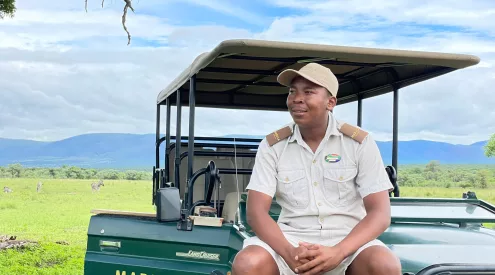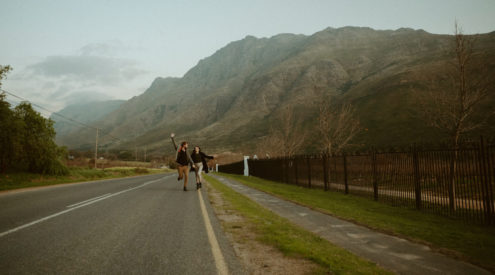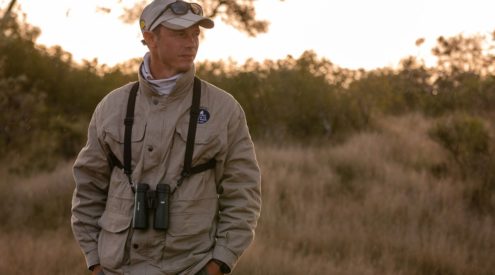Sir David Attenborough, the man who gave a voice to wildlife television as we know it, talks about moments on the African continent that have left him with almost nothing to say, some he’d do all over again, and those moments in nature that still surprise him.
Seven minutes. That’s about the time it takes to fill up your car with fuel or warm up a microwave dinner. It’s the time it took Curiosity to plunge through Mars’ atmosphere before touching down onto a world it knew only on the surface. Seven minutes is the amount of time I had to speak to Sir David Attenborough and I felt exactly like Curiosity, if NASA had had the courtesy to build it a nervous system.
Let me explain. His most recent project, Africa, is a five-part series that began airing in South Africa on BBC Knowledge on 17 February. To make those five, one-hour-long episodes took four years of filming, included 79 separate filming expeditions through 27 countries and resulted in 2 000 hours of footage (check out some of the interesting facts that went into the making of Africa, as well as a few images from the series below). We see the highlights. Watching it all would take two months, non-stop. I wanted to know everything. And while Sir David didn’t have too much to do with the actual filming of the series, I still imagine him to be the type of person able to give a fascinating description of every single dimension that went into making it. Unfortunately time was the one dimension not on our side.
So I kept it brief. I chatted about surprises, memories, creatures and continents with a man who makes a living out of, well, not keeping it brief.
TJ: Some might say you’ve seen it all, yet you maintain that nature will always have the ability to surprise us. Was there a particular moment during the making of the Africa series that took you completely by surprise?
DA: Yes! I was most surprised to discover that there was a huge lake underneath the Kalahari. Nobody knows how deep it is. And there are fish in it that live nowhere else on Earth. Astonishing. I didn’t know that, I don’t think many people did. Did you know that?
TJ: I did not (let’s be honest, if Sir David didn’t know it existed, it’s safe to assume I didn’t either). Your career must be filled with moments like these, moments of awe that you’re tasked with describing to the rest of the world. Can you recall a moment in Africa when you were left quite speechless?
DA: I think [it was] the very first time I landed in Africa in 1954 in Sierra Leone. I’d never been to the tropics before. I’d never been to Africa before. In fact, I’d never been out of Europe before. I was just simply blown sideways by what I saw, by the sheer abundance and variety of the natural world.
TJ: You’ve been travelling with the BBC Natural History Unit for almost 60 years, starting with Zoo Quest in 1954. You’ve been almost everywhere. Is there a destination still on your ‘to-go’ list?
DA: I wish I’d been to the Gobi Desert. I’ve been to the fringes of it, but I don’t suppose anybody would send me to the Gobi Desert because there are no animals there. It would be a wonderful place to go, lots of terrific fossils.
TJ: If you could go back to one place in Africa, where would it be? Why?
DA: I’d go back to the place I know the least about. I’d go back to the Atlas Mountains in the north of the Sahara. They’re a wonderful part of the world. Politically [the surrounding areas are] in turmoil at the moment, but it’s a wonderful, romantic and exciting part of the world.
TJ: Have you ever been bitten by anything quite dangerous?
DA: Not at all, no. I’m too much of a coward; I don’t go into that sort of thing.
TJ: I imagine though that throughout your career you’ve come across some nasty creatures, and I’m not just talking about reporters.
DA: (laughs)
TJ: What’s the vilest creature you’ve encountered?
DA: The vilest creature you would ever encounter is a male human being … who has had too much to drink … who has a gun in his hand … who doesn’t like the look of your face. That’s quite alarming.
TJ: I couldn’t agree with you more. On the flip side, is there a creature that you absolutely revere?
DA: I think probably elephants. If you’re talking about intelligent, majestic creatures, then it’s definitely elephants. The matriarch of a family of elephants is a wonderful, wonderful creature.
TJ: What’s next on the horizon for you?
DA: Oh, lots of things. I’ve just returned from China. I’ll soon be off to Borneo and Australia. Lots of things.
At 86 years of age, one of the greatest natural historians we’ve come to know shows no signs of letting up. And while he isn’t always on location or out in the wild facing the challenges that come with wildlife filmmaking, his role in creating the dramatic connection between the action and the audience is undeniable. In my opinion, a nature series narrated by anyone else will always be found wanting.
Interesting facts about the filming of Africa
During the filming of Africa, the crew came across a few filming firsts (as we’ve come to expect from the BBC Natural History Unit).
- The crew filmed an epic giraffe fight, filmed at Hoanib River, Namibia, in which two rival males use their necks and heads as clubs. They exchanged sledgehammer blows and inflict wounds with their stubby horns.
- They encountered a honey-hunting chimp in the Congo which used four different tools.
- The crew documented incredible footage of lizards hunting for flies on the backs of sleeping lions in the Serengeti, Tanzania.
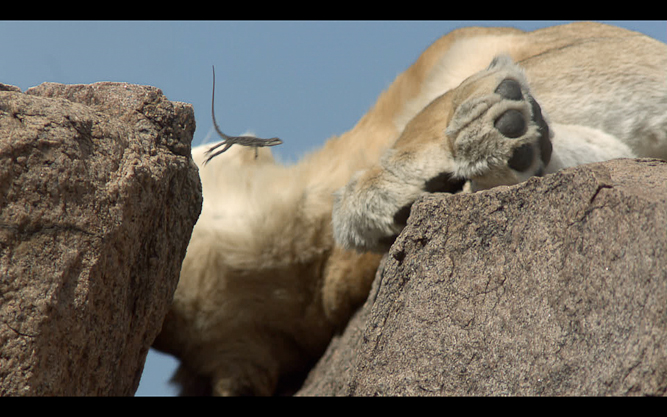
A plucky young lizard leaps within swiping distance of a sleeping African lion whilst on the hunt for flies. Using super slow motion and specialised remote camera technology the Africa team captured a truly remarkable story. © BBC 2012
- For the first time ever the bizarre nesting behaviour of shoebills (such as practicing siblicide) was filmed in the Bangweulu swamp, Zambia.
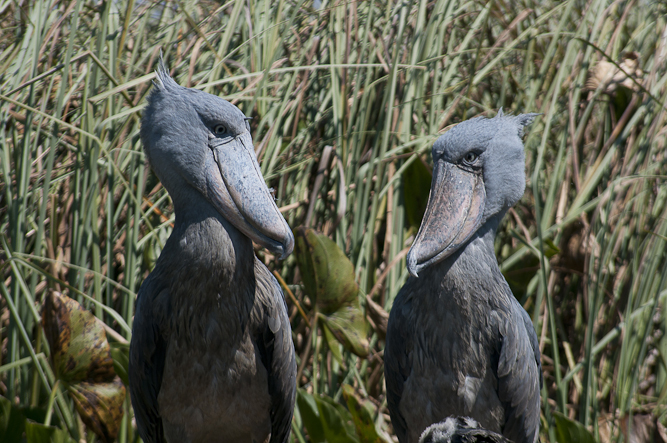
A pair of shoebills or whaleheads, whatever you call them, they are very strange looking birds. Even though they are over 4ft tall (1.2 metres), these extraordinary birds still proved very difficult to find; it took six months of research, a week on the ground to pinpoint the location and then two days to cut a path through an unmapped swamp in Zambia. Eventually the Africa crew was able to film two proud parents and their chicks at the nest. So as not to disturb these vulnerable birds, the crew used state-of the-art, remote cameras to reveal behaviour never seen before. © Alex Lanchester
- The crew filmed amongst the largest concentration of great white sharks anywhere, as 30 gathered around a whale carcass in False Bay, South Africa.
- The last great gathering place of rhinoceros on earth (revealing the surprising sociability of these usually cantankerous creatures) was filmed at night at a secret location in SoutWest Africa.
- The crew recorded silver ants, surviving the Sahara desert in their ‘heat-proof suits’ of silver hair in Egypt.
- Smart meerkats were filmed outwitting the Kalahari’s greatest trickster – a bird called a drongo.
- Male leaf-folding frogs were caught in the fight for a top spot by kick-boxing in the Gola Forest.
- The crew explored Dragon’s Breath Cave – the largest underground lake in the world underneath the Kalahari in Namibia.
- The golden cave catfish – thought to be the world’s rarest and most isolated species of fish was filmed in Dragon’s Breath Cave in Namibia.
- The crew explored the Google Rainforest which was discovered by scientists in 2005 in Northern Mozambique
- The Africa team was the first to film at St Croix Island, the largest breeding African Penguin colony, in over 20 years.
- A shifting desert dune-scape in Tunisia was filmed using a 20-month long time-lapse.
What it took to film Africa
- 4 years in production
- 6, 526 anti-malarial tablets
- 1, 840 hours spent in hides
- 1, 598 days on location
- 601 nights spent in tents
- 79 separate filming expeditions
- 27 countries visited
- Just under 50 tonnes of kit carried by crew
How the crew got around
- 111, 888 4×4 miles were covered during filming
- 100 days werespent on horseback
- 905 hours were spent trekking in the jungle
- 196 hours were spent in a helicopter
- 180 hours were spent trekking in mountains
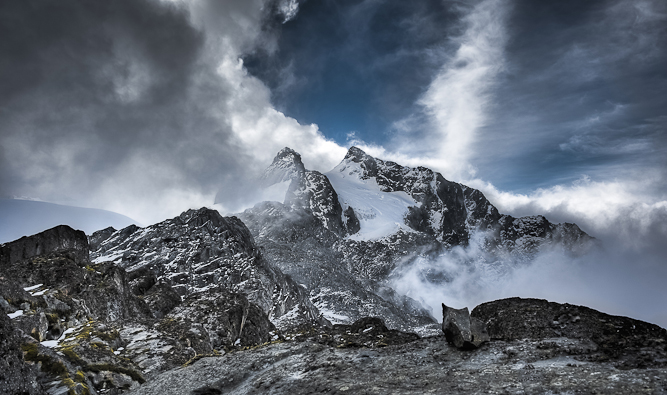
Mount Stanley lies deep inside the tropics, yet nestling below its snow-capped peaks is Africaâ??s largest glacier. It is the sheer height of the mighty Rwenzori Range,(over three miles high in places) that ensures the ice remains. The Rwenzoris sit on the boundary between the dark jungle of the west and the great open Savannah of east Africa. This view of Mount Stanley is a very rare thing - it is almost permanently cloud covered. The Africa crew was forced to spend a full five days at the top, just waiting for the clouds to clear enough to film. © Ulf Rugumayo Amundsen
- The production team climbed the equivalent of Kilimanjaro 259 times just to get up and down to their top floor office.
The technology that was used
- The vast majority of the series was shot without tapes – directly onto computer memory sticks. In total, the raw footage occupied 100 terabytes of storage space. That’s equivalent to around 200 home computer hard-drives, or over 21,000 regular DVDs.
- Over 2000 hours of raw rushes was filmed .
- 553 cameras were deployed throughout the series in total.
- 42 different file formats were used.
- 21 types of camera were used.
- Eight cameras were harmed in the making of Africa – one was chargrilled, two were eaten (by a lion and an elephant), there were two mini-helicam crashes & three cameras drowned.
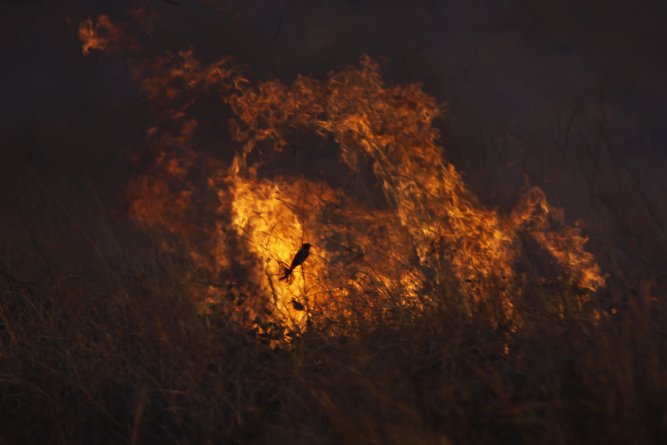
Fire rages through the east African grassland; on one hand destructive but on the other a revitalising force. Filming the flames posed a huge challenge for the Africa crew. But the team was not alone in facing the heat - birds like this drongo, seen as a silhouette against the fire, dodge the flames to catch fleeing insects. © Felicity Egerton
- Over one kilometre of remote camera cabling was used just to film nesting shoebills at Bangweulu Swamp.
More images from the Africa series
A shoebill chick, filmed in the nest for the first time. These extraordinary birds proved very difficult to find; it took six months of research, a week on the ground to pinpoint the location and then two days to cut a path to the nest. But by using remote cameras so as not to disturb these vulnerable birds, the Africa crew revealed previously undocumented, and at times disturbing behaviour. © Alex Lanchester
A family of elephants cross the parched plains of Amboseli. This iconic location, in the shadow of Kilimanjaro, was hit hard by three consecutive years of drought, with tragic consequences for its famous elephants. © Simon Blakeney
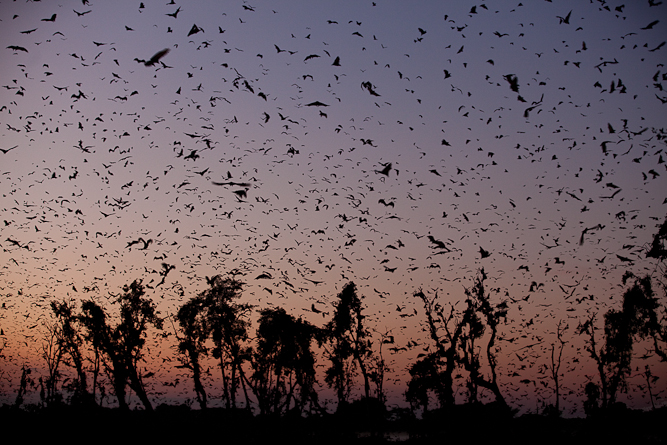
Eight million straw-coloured fruit bats fill the sky above a tiny patch of forest in Kasanka, Zambia. This short-lived, annual aggregation is thought to contain the highest density of mammals anywhere in Africa. So it's no surprise that this natural event attracts crowds of hungry predators. © Justine Evans
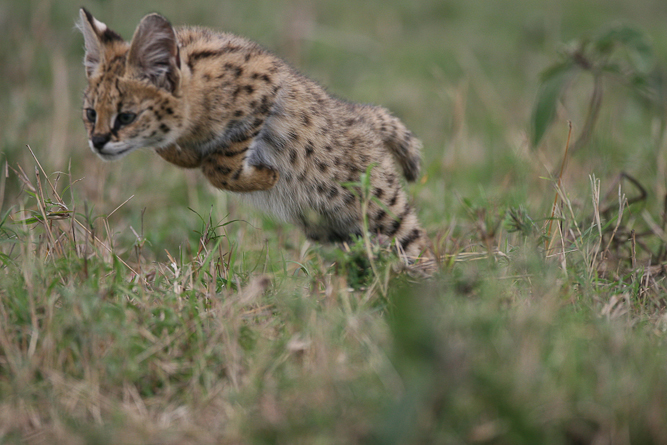
A serval kitten executes a predatory pounce, perhaps for the first time. When her mother is away hunting she uses the opportunity to practice the skills she'??ll need to survive in Africa's tumultuous savannah lands. © James Honeyborne
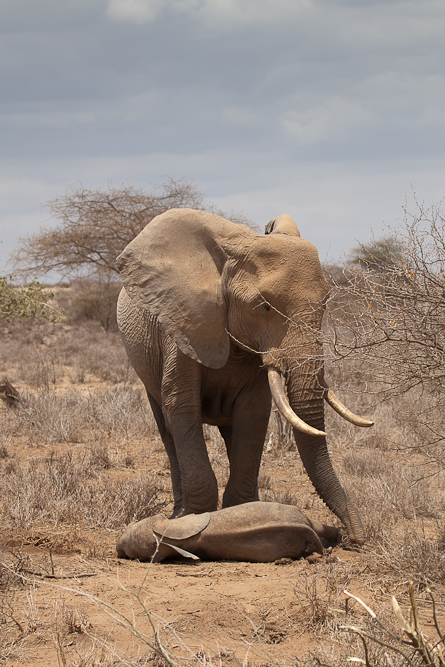
An African elephant mother stands over the body of her calf, a victim of the three consecutive years of drought in east Africa. The Africa crew witnessed the Savannah at its cruellest, and the devastating consequences for one particular family of elephants. © Simon Blakeney

Thousands of flamingos flock at one of east Africa's soda lakes. The birds are one of the few creatures that can tolerate the caustic conditions, and mass here to create one of the worldâ??s greatest natural spectacles. © Simon Blakeney

An adult male agama lizard poised to begin his brave mission to steal flies from the back of a sleeping lion. © Felicity Egerton









